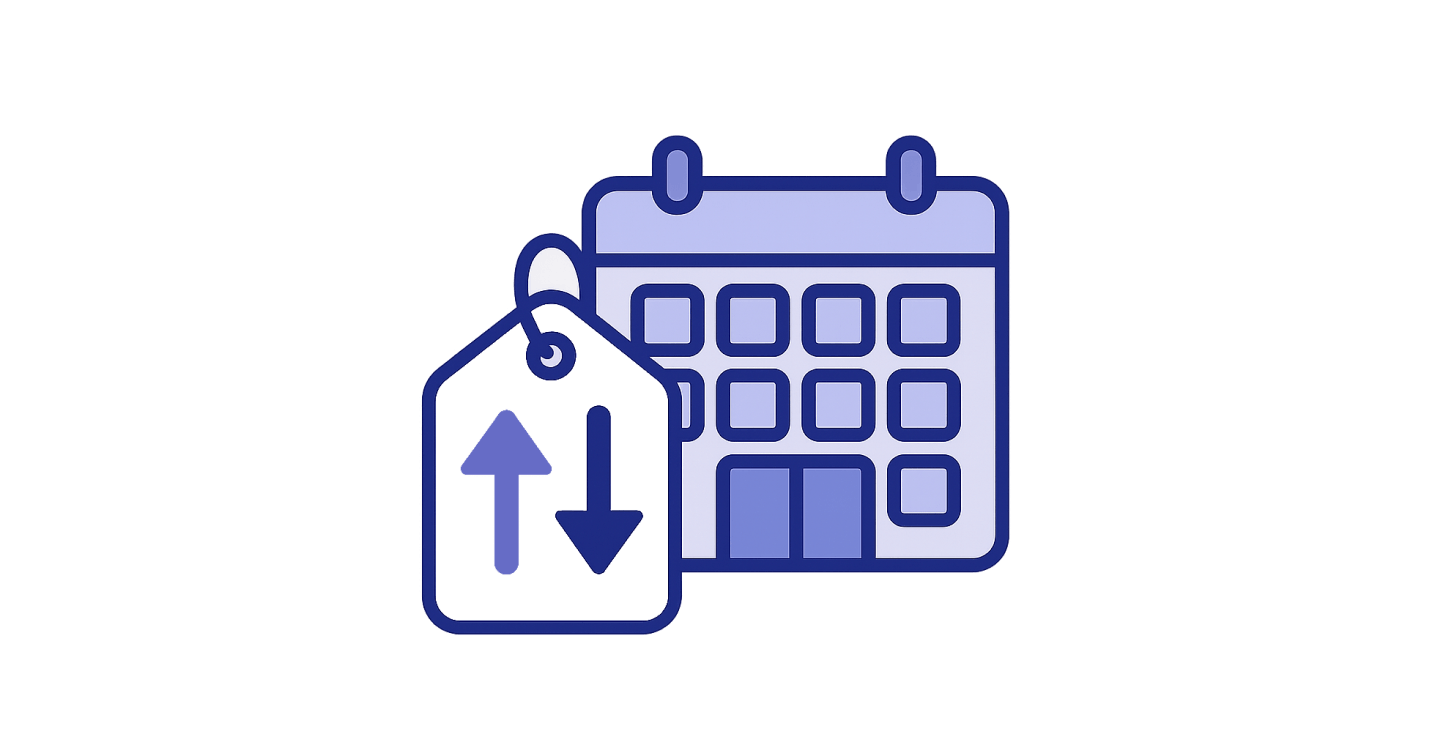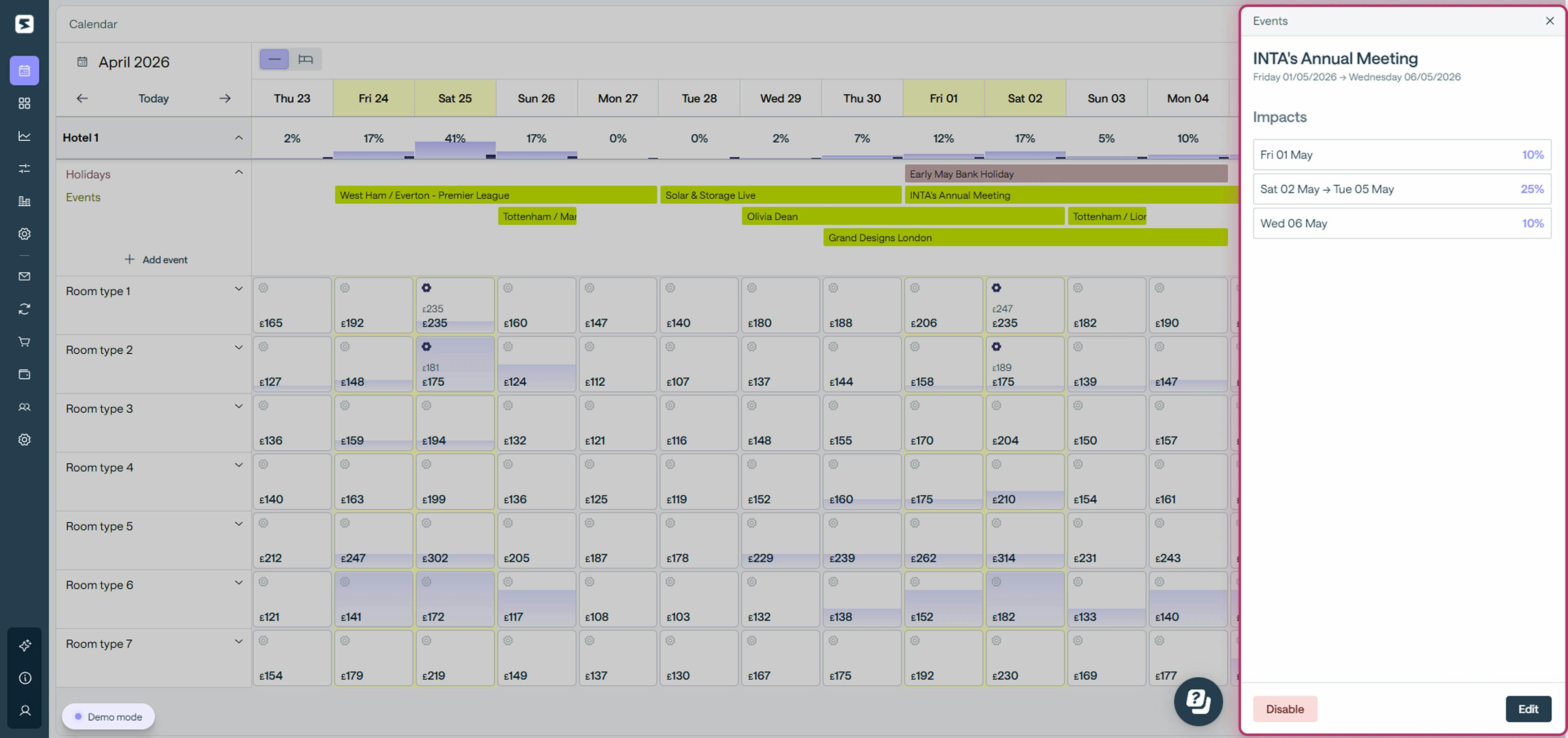How to check your 2026 prices before going live (in 3 steps)
Copying last year’s prices is never a good idea—here’s how to start 2026 strong from day one

Have you opened your availability for 2026 yet?
If not, now is the perfect time to start thinking about it.
But be careful: “opening availability” doesn’t just mean clicking a button and putting your rooms online—especially not by simply copying last year’s prices.
It means taking a moment to analyze your past performance and make data-driven decisions based on your 2026 goals.
In this article, we’ll walk you through 3 essential steps to do just that. And even if you’ve already opened your calendar, this is a great chance to double-check your setup and adjust where needed—before the bookings really start rolling in.
Step 1: Check that your base rates are accurate
The base rate, or starting rate, is the internal reference price that reflects the value of each room or unit type across the year. It’s not the final selling price, but the starting point from which all your rates are calculated.
This makes it a crucial tool—it sets the boundaries for your pricing strategy and protects you from underselling your rooms.
You don’t need to constantly adjust base rates. If you’re in a stable market with clear seasonality, reviewing them quarterly may be enough. But before opening 2026 availability, it’s essential to give them a fresh look.
That means:
- Making sure they still align with your planned opening and closing periods for 2026.
- Checking last year’s performance: maybe spring holidays went well in 2025, but June and July underperformed. Now’s the time to adjust.
- Reflecting any improvements made to the property: if you added a pool, renovated rooms, or upgraded breakfast in 2025, your base rates should reflect that enhanced offering.
How Smartpricing helps
In Smartpricing, starting prices play a key role. They’re the foundation the algorithm uses to calculate all dynamic rates.
Even if you’ve never set base prices for your property before, no problem. The software suggests them for you by analyzing:
- your historical data and future bookings
- market trends and competitor pricing in your area
Here’s an example of what you’d see as soon as Smartpricing is connected to your PMS:

All you have to do is check that the suggestions match your expectations and tweak them if needed.
The algorithm will immediately begin optimizing prices dynamically for each unit type and time period, up to 500 days into the future. That means your entire 2026 pricing strategy updates in just a few clicks.
You can adjust starting prices at any time during the year: update entire periods in bulk, apply percentage increases or decreases, or set different values per room type. The software instantly recalculates all rates for all units.
Step 2: Review events and holidays and set minimum stay rules
Holidays and events can be double-edged swords: they attract high demand, but if not managed properly, they can leave you with gaps in your calendar that are hard to fill.
That’s why it’s worth taking the time to research all local events and movable holidays in 2026.
Once that’s done, you can plan your minimum stay rules.
A practical example
In 2026, June 2 falls on a Tuesday, creating the potential for an extended weekend from Friday, May 29 to Tuesday, June 2.
Now imagine you receive a group booking for Saturday, May 30 well in advance.
Without any restrictions in place, you might accept it, and end up with Sunday and Monday (May 31 and June 1) unsold, right in the middle of the peak.
Minimum stay rules help you avoid these gaps and manage demand more effectively.
But be careful about “orphan nights”!
Still using the June 2 example: if you require a 4-night minimum stay from May 29 to June 1, it’s possible to get two overlapping bookings—one from May 22 to May 29, and another from May 30 to June 3.
Both follow the rules, but the night of May 29 stays empty and practically impossible to sell.
How Smartpricing helps
Smartpricing automatically detects key events and holidays in your area, assigning each one an estimated percentage impact on pricing. But more importantly, it allows you to edit or add them directly within the platform.
This way, you’re in control: you decide which events truly matter to your target guests, and how much they should influence your pricing based on your own experience. The algorithm takes care of the final price calculation.

Also, as explained in our complete guide to minimum stay rules, Smartpricing lets you set stay restrictions both manually (just like in your Channel Manager) and dynamically—meaning you can create rules that automatically adapt based on how far in advance the booking is made.
And that’s not all: Smartpricing also helps you eliminate orphan nights thanks to a dedicated feature.
Back to our June 2 example: if May 29 becomes an orphan night, Smartpricing will automatically detect it and reduce the minimum stay for that night to 1 night, making it bookable again instantly.
Step 3: Monitor your pickup
Pickup refers to how bookings accumulate over time—it’s one of the clearest indicators to understand if you’re on the right track.
It shows you, in real time, how many rooms are still available in relation to the booking window (i.e. how far in advance people book).
The logic is simple:
- If today (early September) you only have 3 rooms left for April 15, it means that date is already in high demand. You can raise your rates now to maximize revenue.
- On the other hand, if you still have those same 3 rooms unsold by early April, you’ll need to choose between lowering rates to fill them or launching a targeted offer to boost perceived value without triggering price erosion.
The problem? Doing this manually takes a lot of work. You’d need to check your reservations,
calculate your occupancy, decide daily whether to raise or lower rates (and by how much), and manually update your prices in your PMS or channel manager.
Want to review your 2026 rates? Try it now for free!
How Smartpricing helps
With Smartpricing, you don’t have to track your pickup manually every day—the software does it for you, automatically and continuously adjusts your starting prices based on occupancy levels and the booking window.
But there’s more: if you want greater control over the algorithm, you can use Custom rules to personalize how and when price increases or decreases happen.
Back to the June 2 example: in addition to setting your minimum stay rules, you could decide that between 31 and 40 days before check-in, prices should progressively increase based on occupancy, as shown in the screenshot below.

Smartpricing doesn’t just analyze your past and future bookings. It also cross-references them with market trends in your area, local events and holidays, and even your direct competitors’ occupancy levels.
And thanks to the integration with your property management system, your pricing strategy stays perfectly synced across all your sales channels—without mistakes.
Want to see how it works?
Request a personalized demo
Talk to a Smartness expert and discover how to automate your pricing strategy and increase your property’s revenue by an average of 30 percent. Free, no obligation.
Introducing Smartsite: we build your website to boost visibility and direct bookings
With Smartsite, you get a turnkey website already optimized for SEO and direct reservations.
How events affect hotel rates: what Radiohead and the Winter Olympics can teach you
Learn how to properly estimate event impact and sell your rooms at the most profitable rate.
